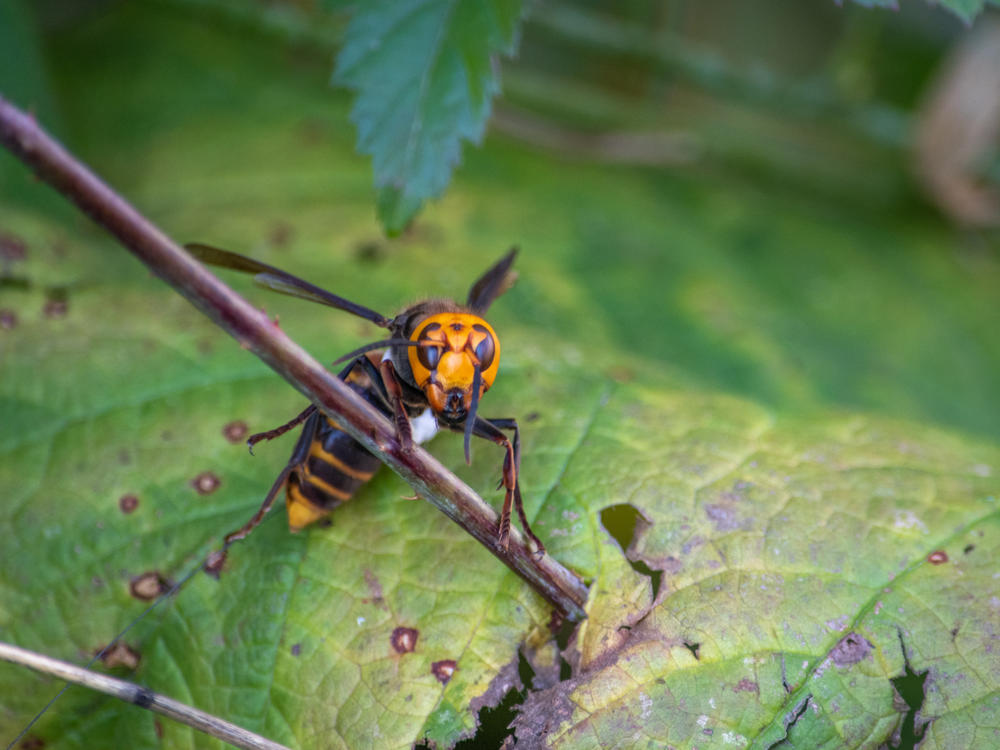Section Branding
Header Content
1st 'Murder Hornet' Nest In U.S. Is Found In Washington State
Primary Content
Remember the "murder hornets"? You know, the terrifyingly large Asian giant hornets that are threatening to wipe out the North American bee population?
Entomologists with the Washington State Department of Agriculture have now located a nest of them – the first to be found in the U.S., the agency says.
The nest was discovered in the cavity of a tree on a property in the city of Blaine, near the Canadian border.
This achievement closely follows another advance: State entomologists had recently had luck trapping the hornets. This week, they were able to collect four live Asian giant hornets using a new type of trap – and managed to attach radio trackers to three of them.
One of those tagged hornets led staffers to the nest.
The plan now? Destroy the nest. The agency says it intends to eradicate it on Saturday, removing the tree if necessary.
Asian giant hornets are an invasive pest that prey on honeybees and other insects.
"Only a couple of hornets can slaughter an entire healthy honeybee hive in just a matter of a few hours," Sven-Erik Spichiger, chief entomologist for the state's agriculture department, told NPR last week.
The hornets can leave a path of deadly destruction, as NPR's Christianna Silva reported in August:
"According to the WSDA, the hornets could have 'negative impacts on the environment, economy, and public health of Washington State.' In Japan, they kill up to 50 people a year. Experts are also worried about their presence in North America because they eat bees and destroy their colonies, an alarming sight on a continent already grappling with a rapidly declining bee population. When these hornets are finished attacking, they can leave what amounts to piles of bees with their heads torn from their bodies."
Copyright 2020 NPR. To see more, visit https://www.npr.org.

